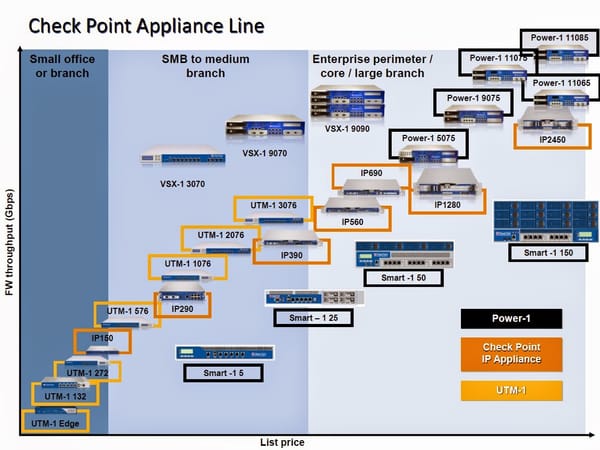Russia Just Recruited a 17-Year-Old Canadian Kid as a Spy: The Cybersecurity Wake-Up Call We Can't Ignore

Bottom Line Up Front: Russia successfully recruited a Canadian teenager to spy in Europe using cryptocurrency payments and psychological manipulation. This isn't an isolated incident—it's part of a systematic shift in intelligence operations that every cybersecurity leader needs to understand. If a foreign adversary can recruit a 17-year-old from across the globe, your organization's human defenses may be far more vulnerable than you think.

The Case That Changes Everything
Laken Pavan was 17 when he left Vancouver in April 2024, telling his family he was backpacking through Europe. Instead, he flew to Moscow, then to Russian-occupied Donetsk in Ukraine, where FSB officers recruited him as a spy. His handler, known only as "Slon" (Russian for elephant), paid him in Bitcoin and instructed him to gather intelligence on Polish military facilities.
When Pavan ran low on funds in Denmark, he messaged Slon: "Are you able to send BTC today? I have a big problem there are no Bitcoin ATMs in Denmark." Within minutes, $130 worth of cryptocurrency appeared in his wallet. Days later, drunk and terrified in a Warsaw hotel, he asked the receptionist to call police and confessed everything.
This wasn't James Bond. This was a teenager with military aspirations—his father was a retired Canadian Forces master corporal, and Laken had been a longtime cadet and reservist planning to join the army full-time after his 18th birthday. Yet within weeks, Russian intelligence had turned him into an asset.
The Strategic Shift: Why Russia Pivoted to Teenagers
After the 2022 invasion of Ukraine, over 750 Russian diplomats and intelligence officers were expelled from European embassies and consulates—most of them spies. Russia's intelligence services had to rapidly rebuild their networks. As the number of Ukrainians sympathetic to Russia dwindled following the full-scale invasion, the FSB started offering money for acts of espionage and sabotage to untrained agents.
Since 2022, dozens of teenagers in Ukraine and at least 12 teens elsewhere in Europe—in Germany, Poland, Britain, and Lithuania—have been arrested in Russia-linked cases of sabotage and spying. This isn't desperation; it's strategic adaptation.
Why teenagers make perfect modern spies:
- Low suspicion profile: Who suspects a backpacking teenager?
- Digital nativity: They're comfortable with encrypted messaging, cryptocurrency, and social media
- Financial vulnerability: Often broke and easily motivated by small payments
- Psychological malleability: More susceptible to manipulation and ideology
- Clean backgrounds: No prior intelligence connections to detect
According to security officials from four European agencies, Russian recruiters prioritize gathering intelligence on military equipment movements, storage facilities, and locations training Ukrainian specialists through anonymous recruitment operations on platforms like Telegram.

The Cryptocurrency Connection: Funding the Shadow War
Pavan's case reveals the financial infrastructure of modern espionage. His handler used cryptocurrency to maintain operational security—payments were quick, relatively anonymous, and difficult to trace. The teenager received small amounts ($130-$250) that seemed innocuous but funded his movement across Europe.
This payment method offers several advantages for intelligence operations:
- Pseudonymous transactions that complicate attribution
- Cross-border transfers without traditional banking oversight
- Small denominations that avoid triggering financial monitoring
- Integration with messaging apps like Telegram for seamless operations
The Human Risk Revolution: What This Means for Your Organization
The brutal reality: 83% of organizations reported at least one insider attack in 2024—a five-fold increase from 2023. Between 2023 and 2024, there was a 28% increase in insider-driven data exposure, loss, leak, and theft events.
The Pavan case illustrates how the line between "insider" and "outsider" threats has blurred beyond recognition. Consider these scenarios:
Scenario 1: The Remote Contractor Your organization hires a talented developer from Eastern Europe. They have legitimate access to your systems. Unknown to you, they're supplementing their income by selling system architecture details to a competitor—or worse, a foreign intelligence service.
Scenario 2: The Financial Pressure Point A warehouse worker facing mounting student loans receives a Telegram message offering $500 for photos of your shipping manifests. It seems harmless—just logistics data. But those manifests reveal your supply chain vulnerabilities to a state actor planning sabotage.
Scenario 3: The Ideological Convert A recent hire becomes radicalized online and starts copying customer databases, believing they're fighting against "corporate imperialism." They don't realize they're actually feeding intelligence to a foreign operation.

The Recruitment Methodology: How They Target Your People
Russian recruitment operations follow a predictable pattern. They start small with intelligence gathering—asking recruits to photograph NATO bases, collect maps, or buy anonymous SIM cards. Questions about the purpose are brushed aside with responses like "Let's start small—information." But small quickly escalates to sabotage—vandalism, arson, bombing, and cryptocurrency laundering.
The psychological playbook:
- Identification: Target financially vulnerable or ideologically susceptible individuals
- Approach: Initial contact through social media or encrypted messaging
- Assessment: Evaluate the target's access, motivations, and discretion
- Development: Build trust through small requests and regular payments
- Tasking: Gradually escalate from information gathering to active operations
- Control: Maintain contact through secure channels and financial incentives
Russia systematically targets teenagers and young adults, including orphans, individuals displaced by conflict, and those facing financial hardship or seeking additional income. In corporate environments, this translates to targeting:
- Interns and junior employees with minimal vetting
- Contractors and gig workers with temporary access
- Remote employees with reduced oversight
- Financially stressed staff facing personal crises
The Scale of Russia's Shadow War
The number of Russian attacks in Europe nearly tripled between 2023 and 2024, after quadrupling between 2022 and 2023. This isn't limited to teenagers—it's a comprehensive campaign targeting critical infrastructure:
Recent incidents include arson attacks in Poland, Germany, Lithuania, Latvia, and Czechia; flying drones over Stockholm airport; jamming Baltic GPS systems; disrupting French railways during the Paris Olympics; and targeting facilities supplying Ukraine including a BAE Systems munitions facility in Wales and a Ukrainian-owned logistics firm in London.

Four Critical Takeaways for Cybersecurity Leaders
1. The Insider Threat Is No Longer Just "Inside"
Traditional perimeter security assumes you can distinguish between trusted insiders and external threats. The most noticeable shift in 2024 was that 11% of organizations felt extremely vulnerable to insider threats, a significant increase from 5% in 2023. With hybrid work, gig labor, and online radicalization, that distinction has collapsed.
Action items:
- Extend background checks to include social media monitoring and financial stress indicators
- Implement continuous vetting for employees with access to sensitive systems
- Monitor unusual financial activities or lifestyle changes that may indicate external influence
2. Recruitment Is Psychological, Not Just Technical
There has been a marked increase in concern for malicious insiders, rising from 60% in 2019 to 74% in 2024. The most notable change is the dramatic increase in concerns regarding personal benefit as an insider motive, which has risen from rank #6 in 2019 (15%) to #2 in 2024 (47%).
Action items:
- Train security teams to recognize behavioral indicators of recruitment
- Implement employee assistance programs that address financial stress
- Create reporting mechanisms for employees who receive suspicious approaches
3. Technology Enables, But Humans Execute
There has been a rapid increase in insider threat activities from 2019 to 2024, with threat actors seeking insiders and offering their services for targeting companies through cloud-based messaging apps and dark web forums.
Action items:
- Monitor employee communications on corporate devices for recruitment indicators
- Implement data loss prevention systems that detect unusual patterns
- Use behavioral analytics to identify potential insider threats before they act
4. Security Culture > Security Controls
If your employees don't feel connected, respected, and supported, they become more vulnerable to external influence. Organizations should monitor behavioral, technical, and organizational indicators of insider threats, including unexplained changes in attitude, excessive secrecy, unusual work hours, irregular file downloads, unauthorized access attempts, or data movement to external devices.
Action items:
- Invest in employee engagement and mental health support
- Create clear channels for reporting financial distress or external pressure
- Build a culture where security awareness is everyone's responsibility
The Questions You Should Be Asking Right Now
- Do you know who has access to what data in your organization? Not just formally, but practically?
- How would you detect if an employee was being recruited by a foreign intelligence service?
- What financial stress are your employees under, and how might that make them vulnerable?
- Are your remote workers properly vetted and monitored for behavioral changes?
- Do you have mechanisms to detect cryptocurrency payments or unusual financial activities?
The Road Ahead: Preparing for the Human Risk Era
At its core, cybersecurity is a human challenge, requiring a human-centric approach. The key to proactive defense lies in an insider risk management program rooted in behavioral science. Organizations must understand the early warning indicators of risky behavior and have the right mechanisms in place to effectively detect and deter risks before they escalate into breaches.
The Laken Pavan case is a mirror reflecting our new reality. In an age where a 17-year-old Canadian can be recruited by Russian intelligence through encrypted messaging and paid in cryptocurrency to spy in Poland, traditional security models are obsolete.
The new security paradigm requires:
- Continuous human risk assessment alongside technical vulnerability management
- Behavioral monitoring that detects recruitment attempts and psychological manipulation
- Financial stress indicators as part of security risk assessment
- Cultural resilience that makes employees less susceptible to external influence
- Cross-border collaboration to understand evolving threat actor tactics
Laken Pavan was sentenced to 20 months in a Polish prison after pleading guilty to espionage charges. His mother says he turned himself in because "he knew it was wrong." But how many others are out there right now, being recruited, being paid, being convinced to betray their organizations and countries?
The teenager with the Bitcoin wallet and the scared confession in a Warsaw hotel isn't an anomaly—he's a preview of the threats coming for your organization. The question isn't whether human-centered espionage will target your company. The question is whether you'll detect it in time.
Your move.
Based on reporting from CBC News, Reuters, and security research from multiple European intelligence agencies. Case details verified through Polish court documents and investigative journalism.









